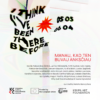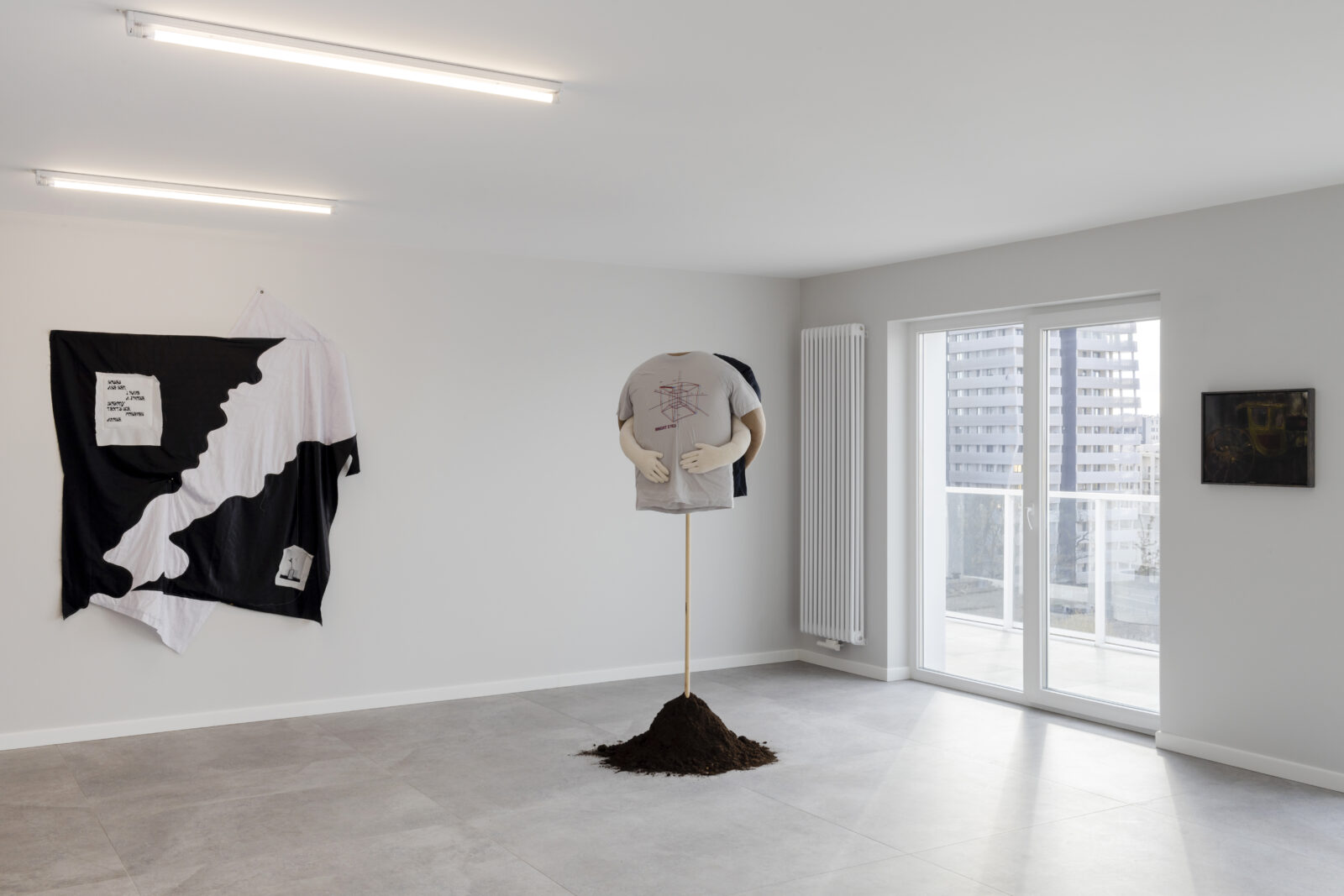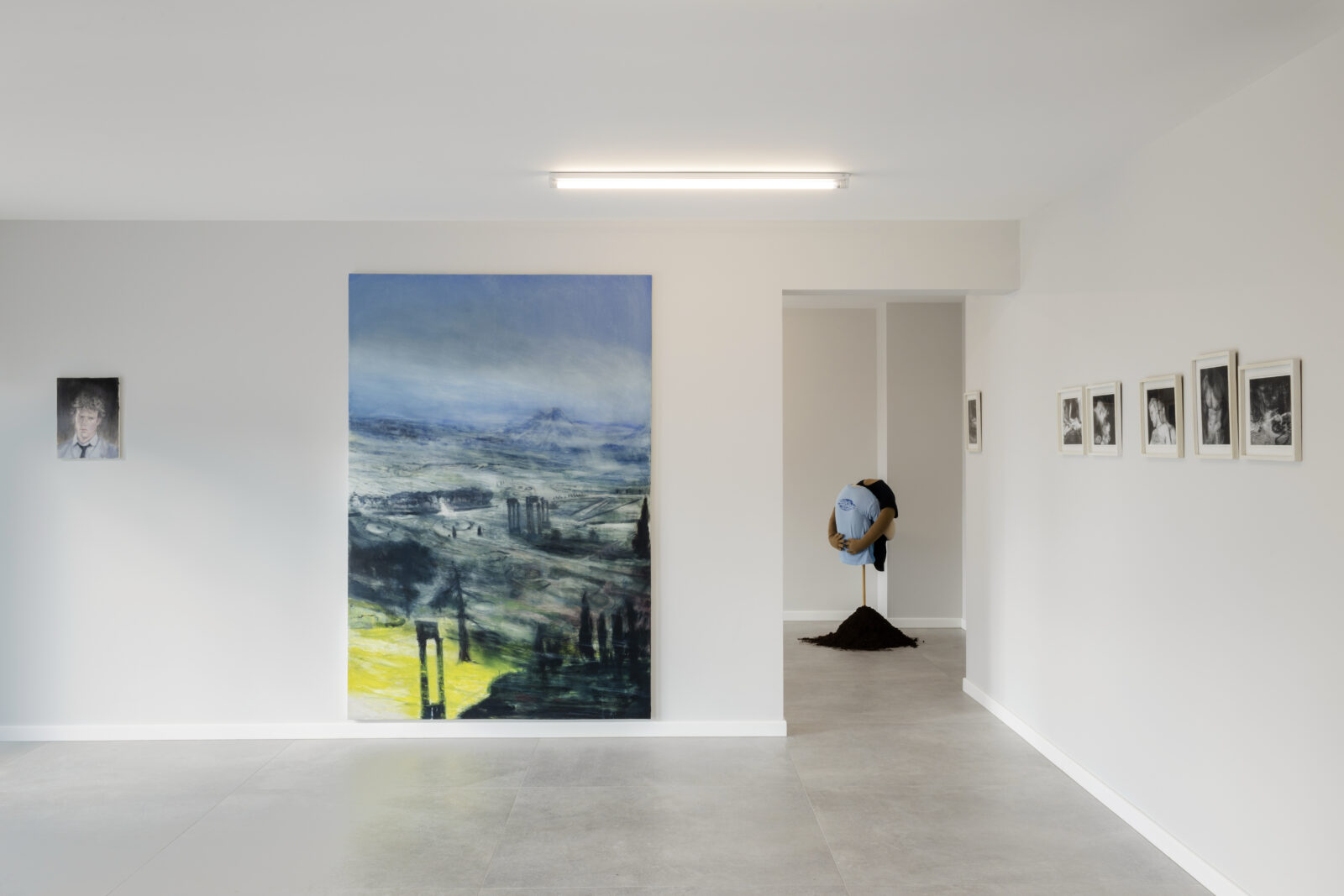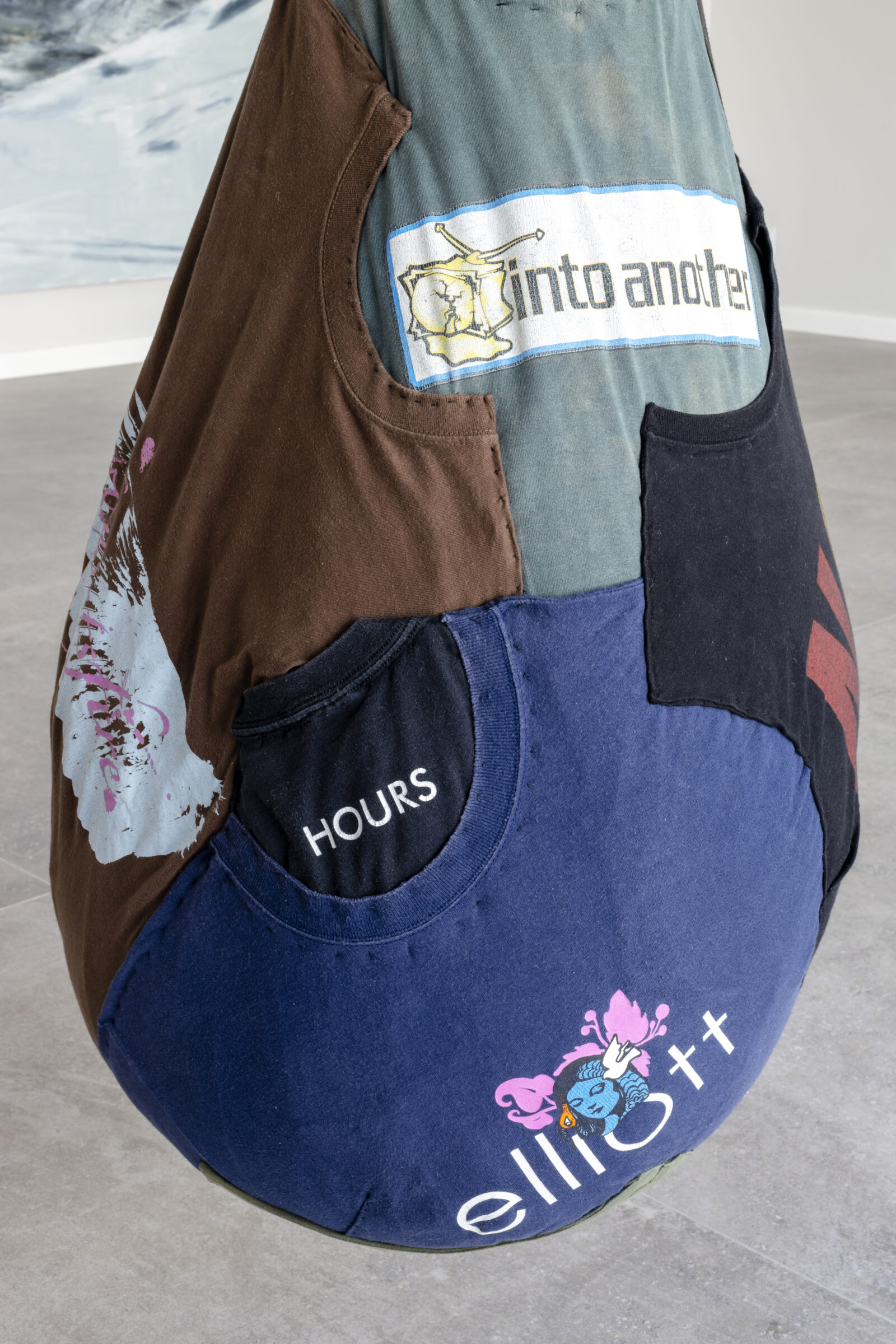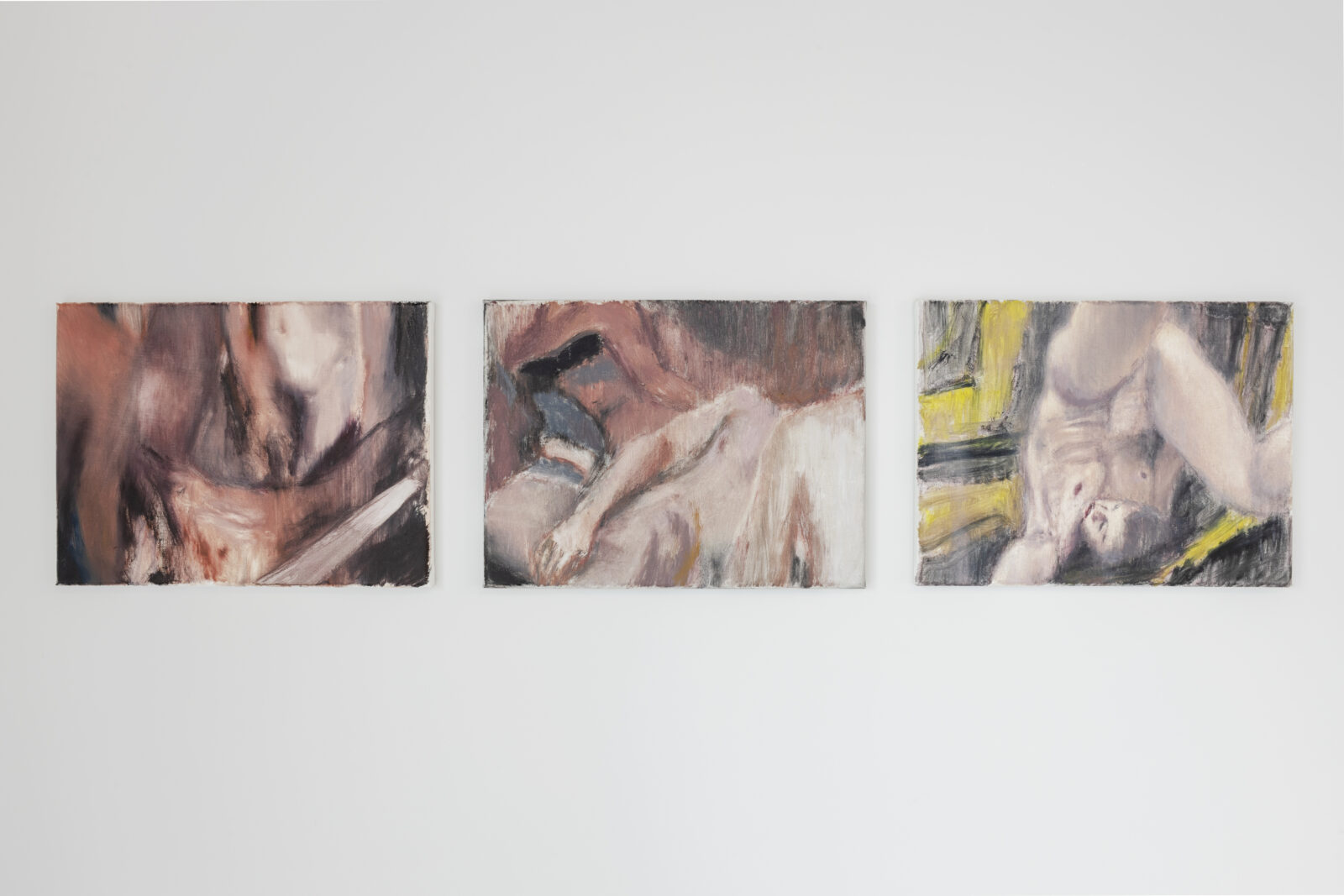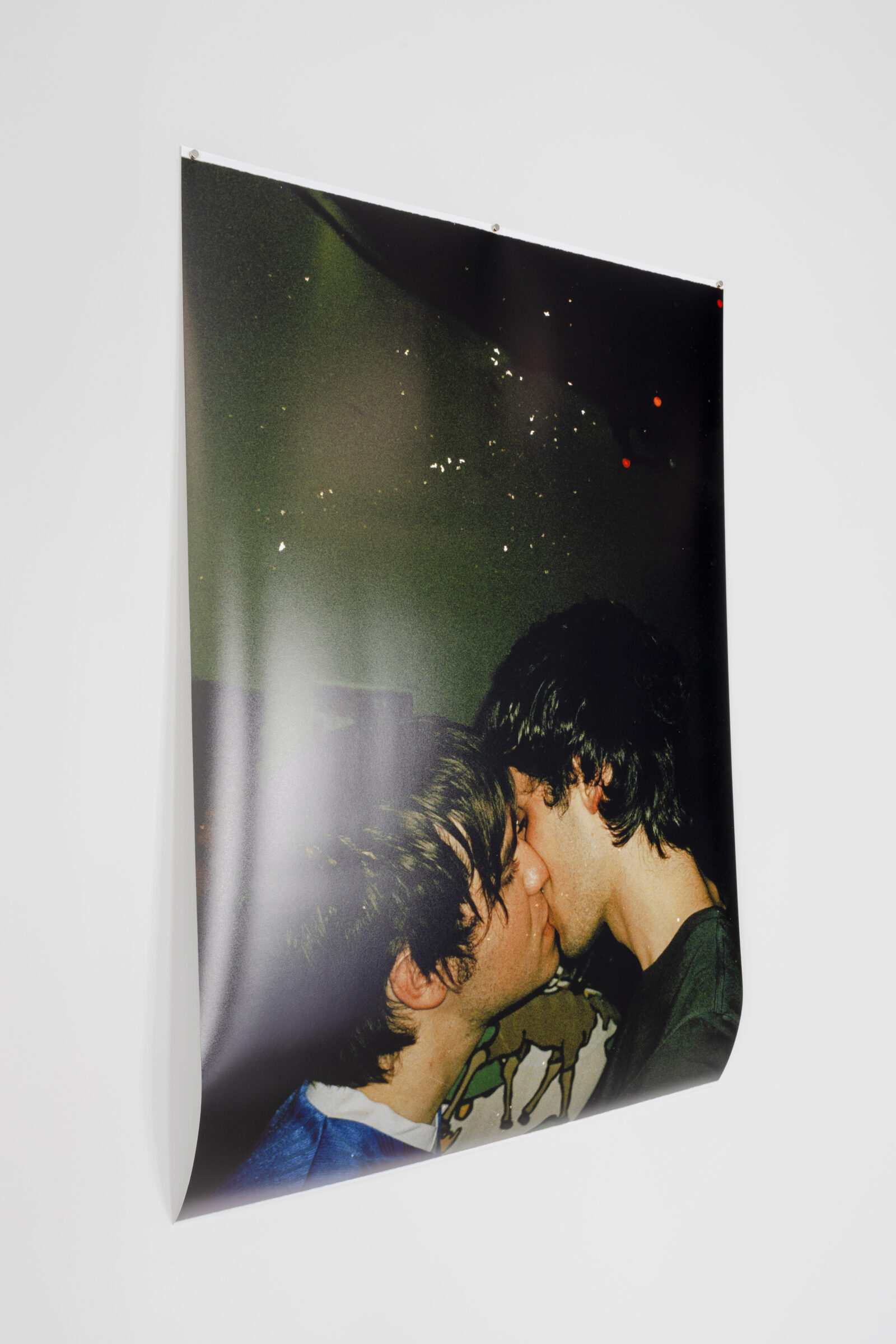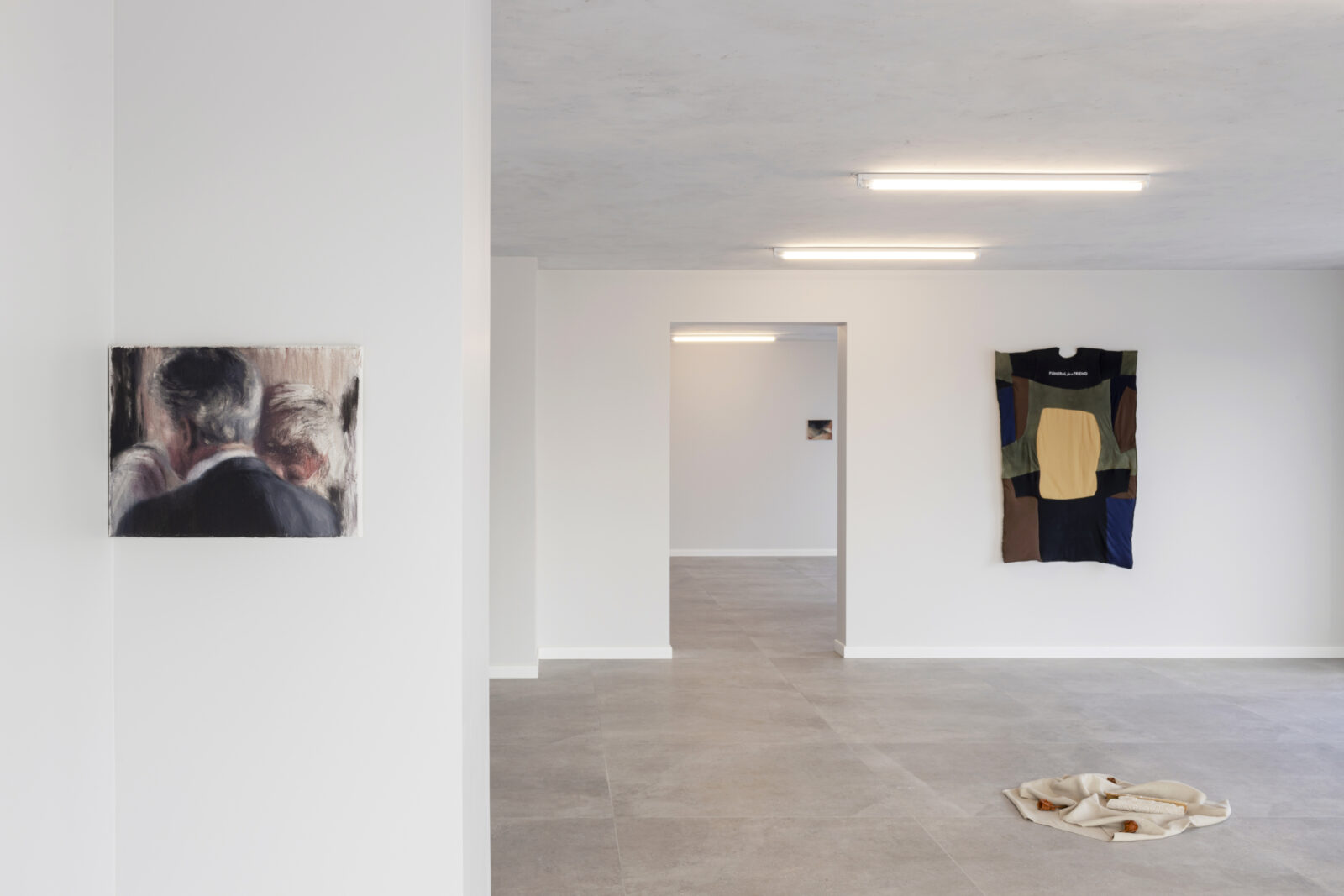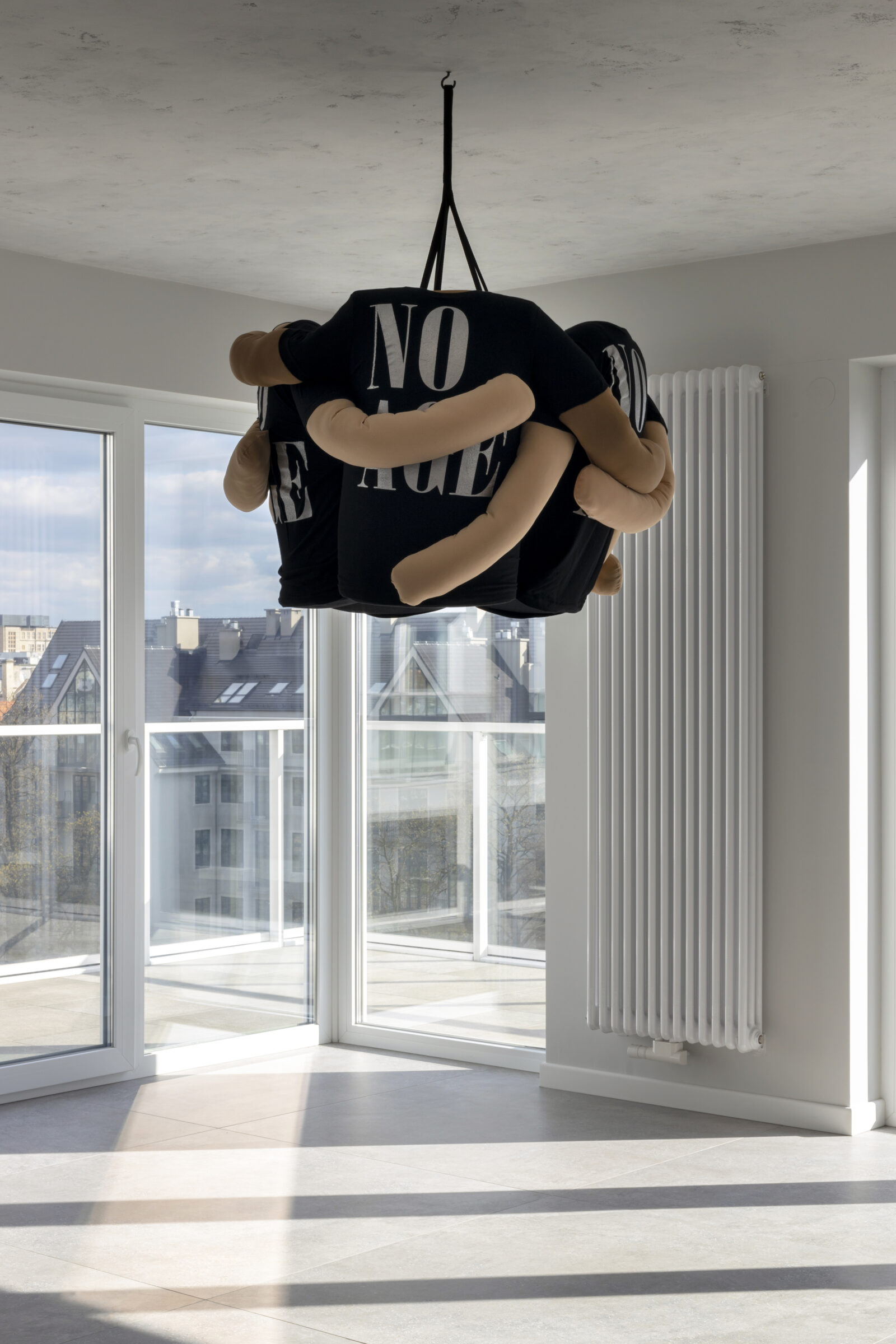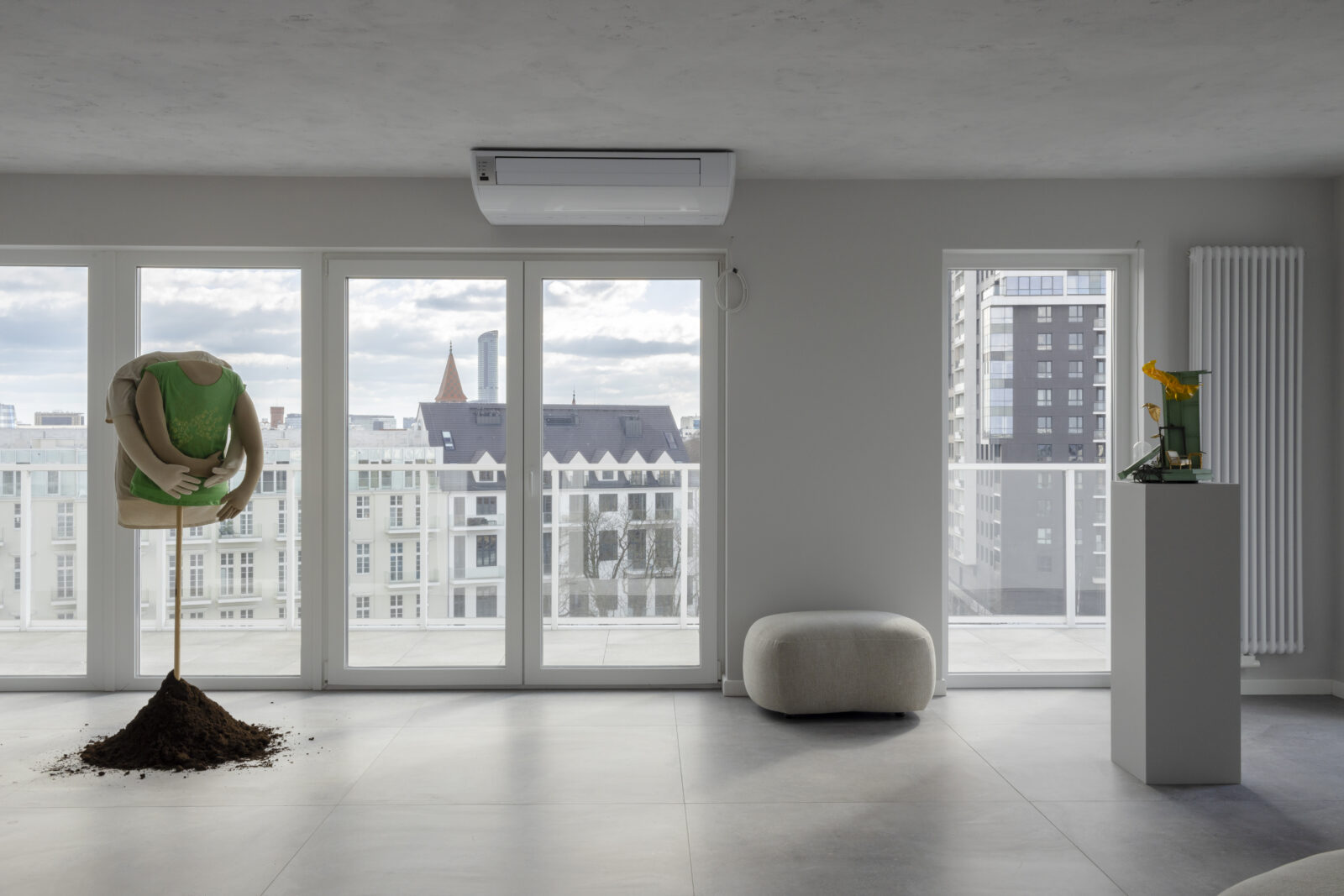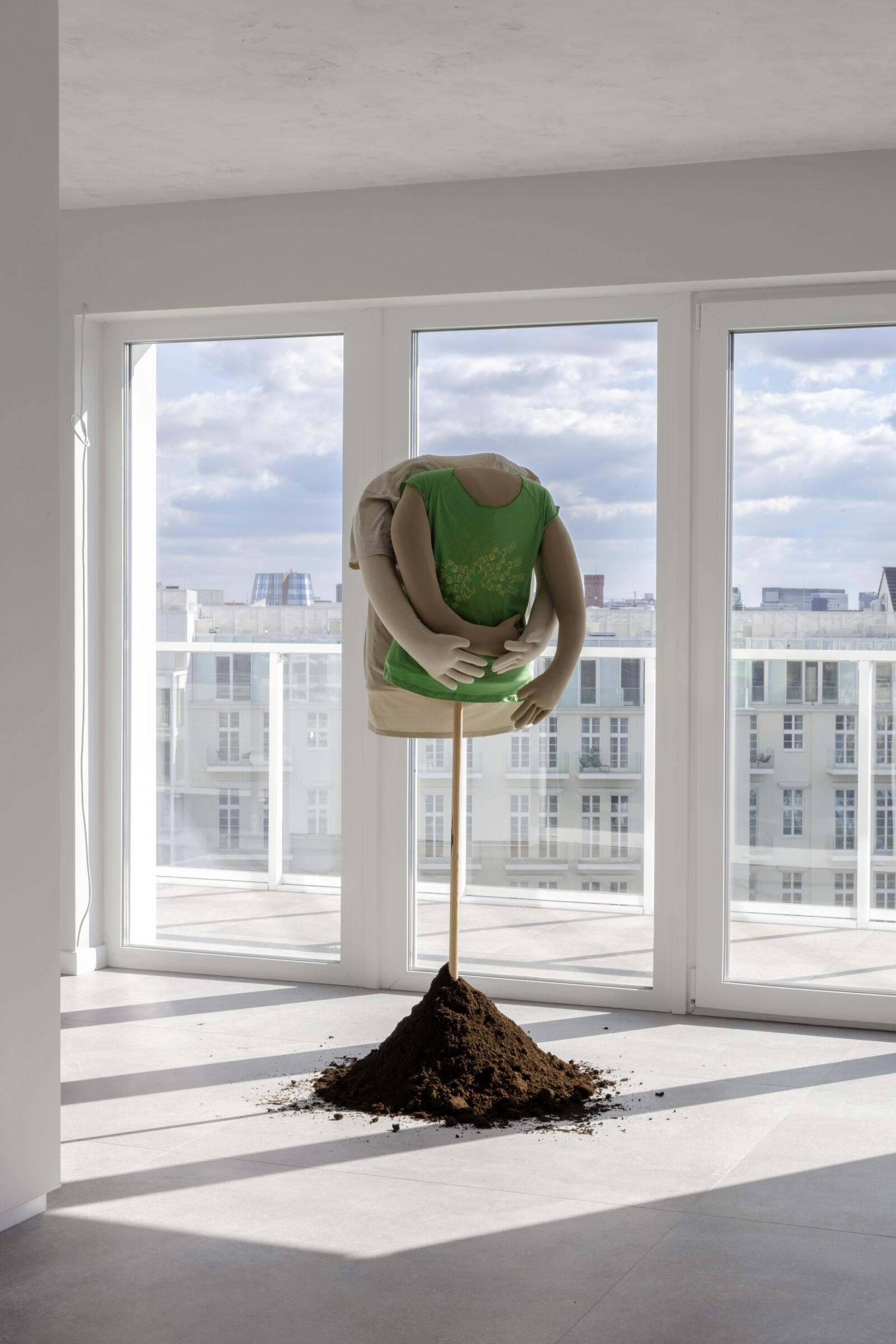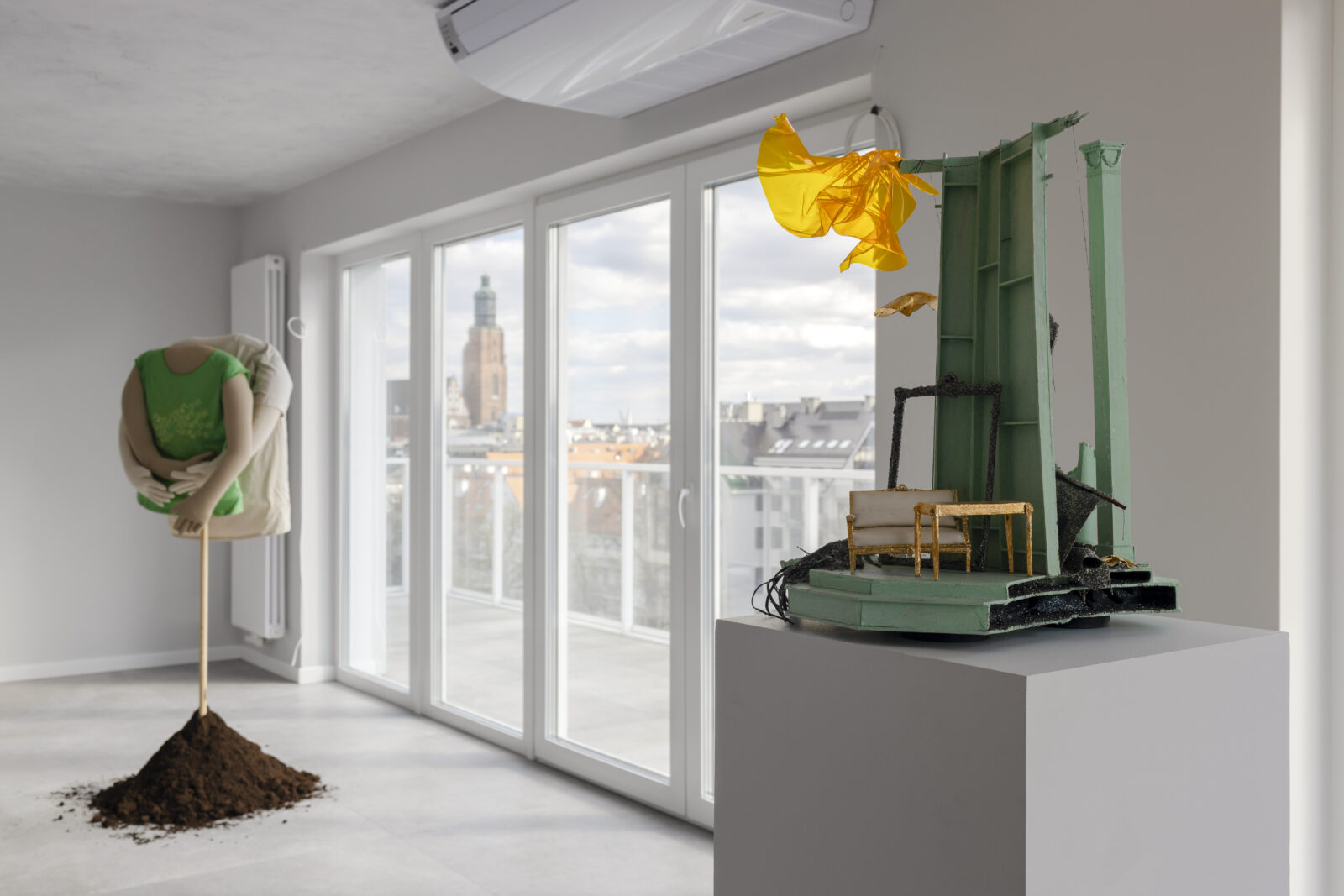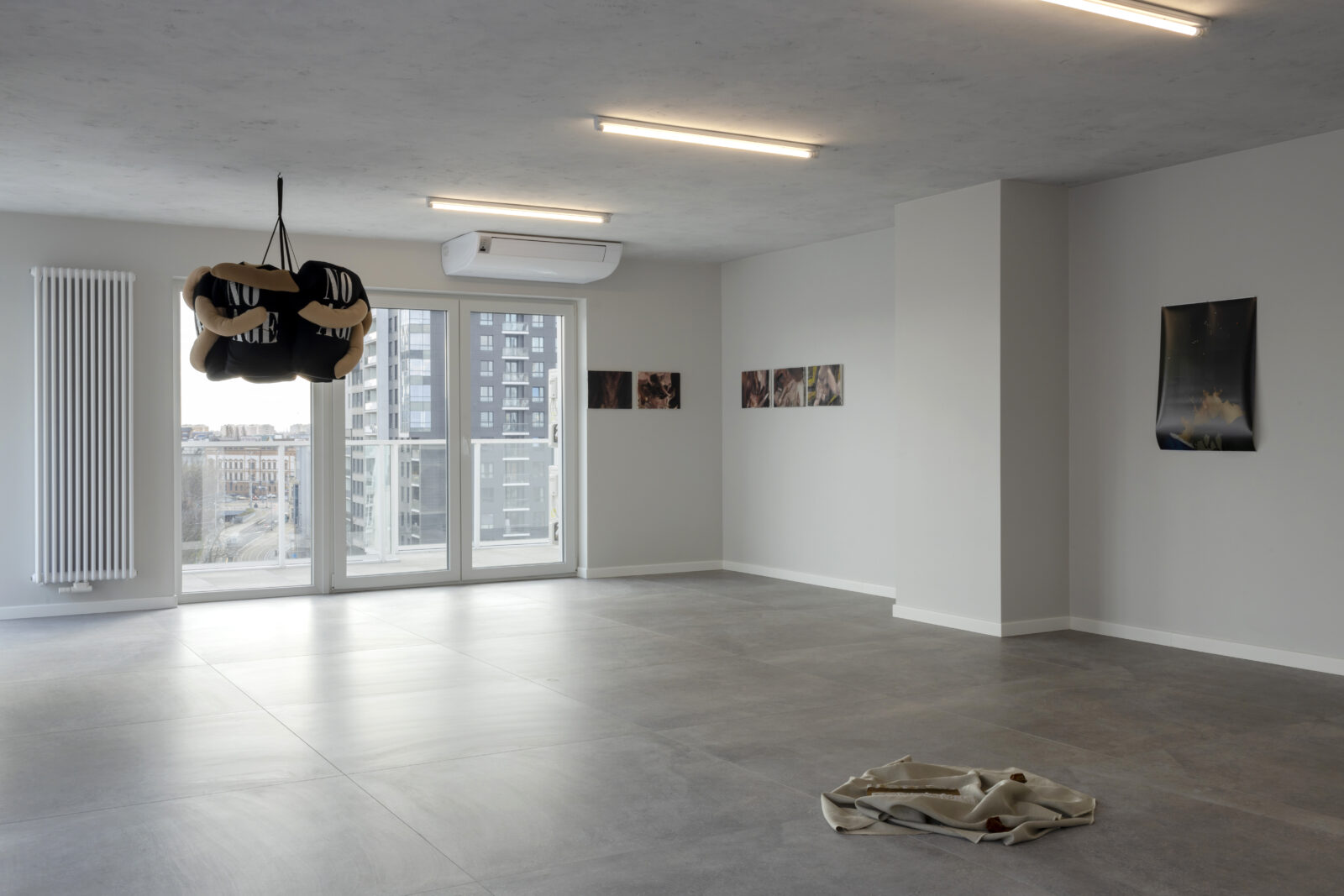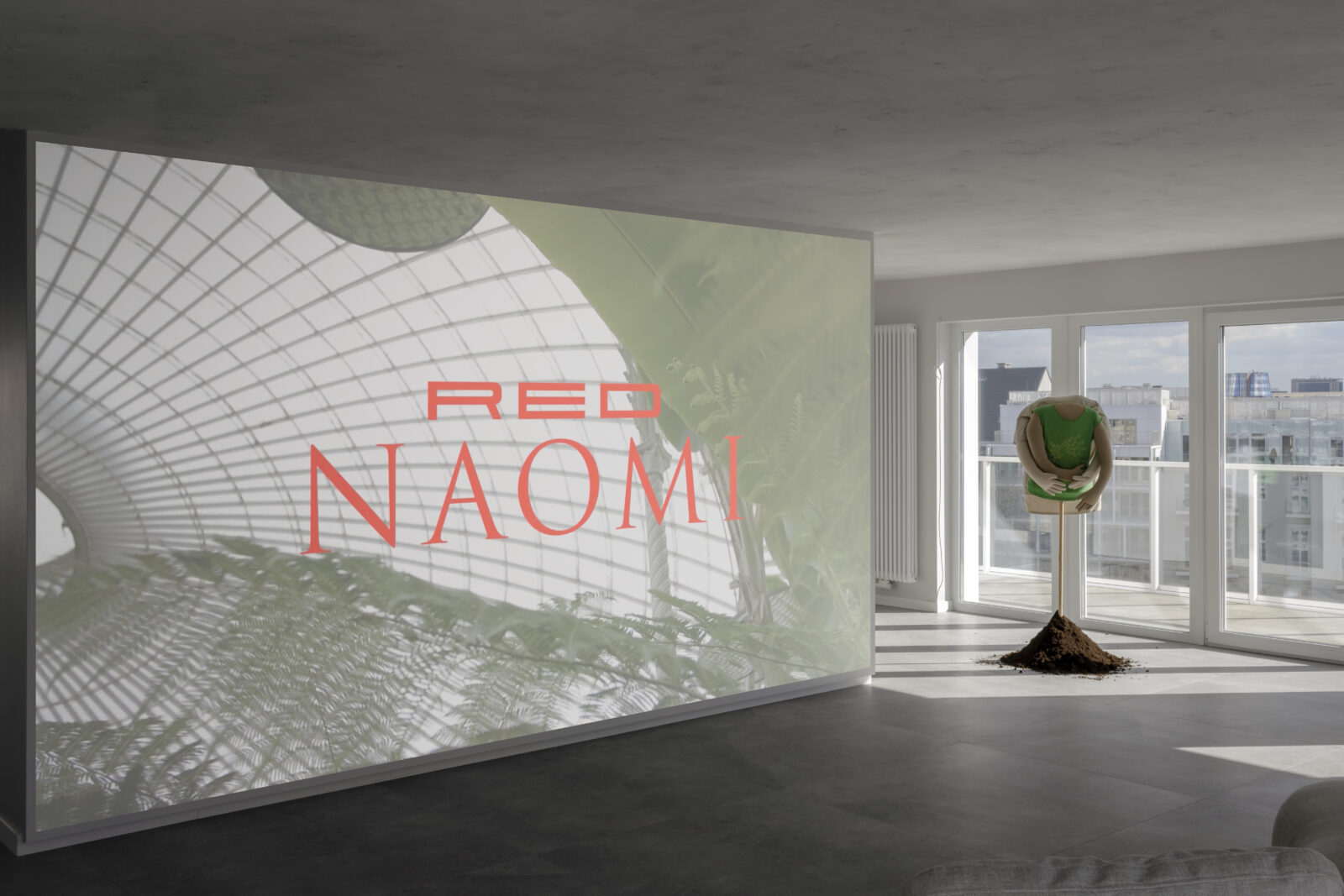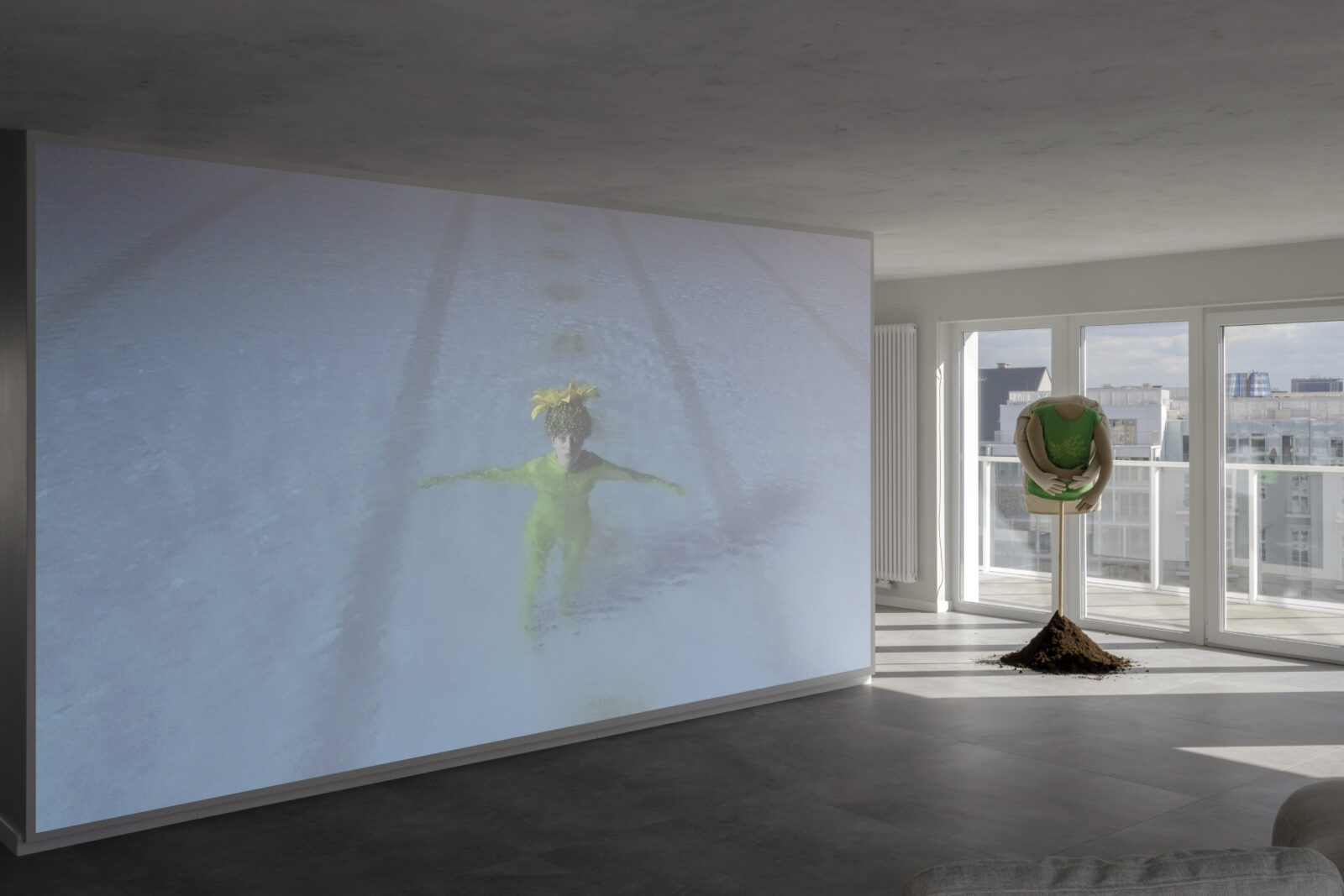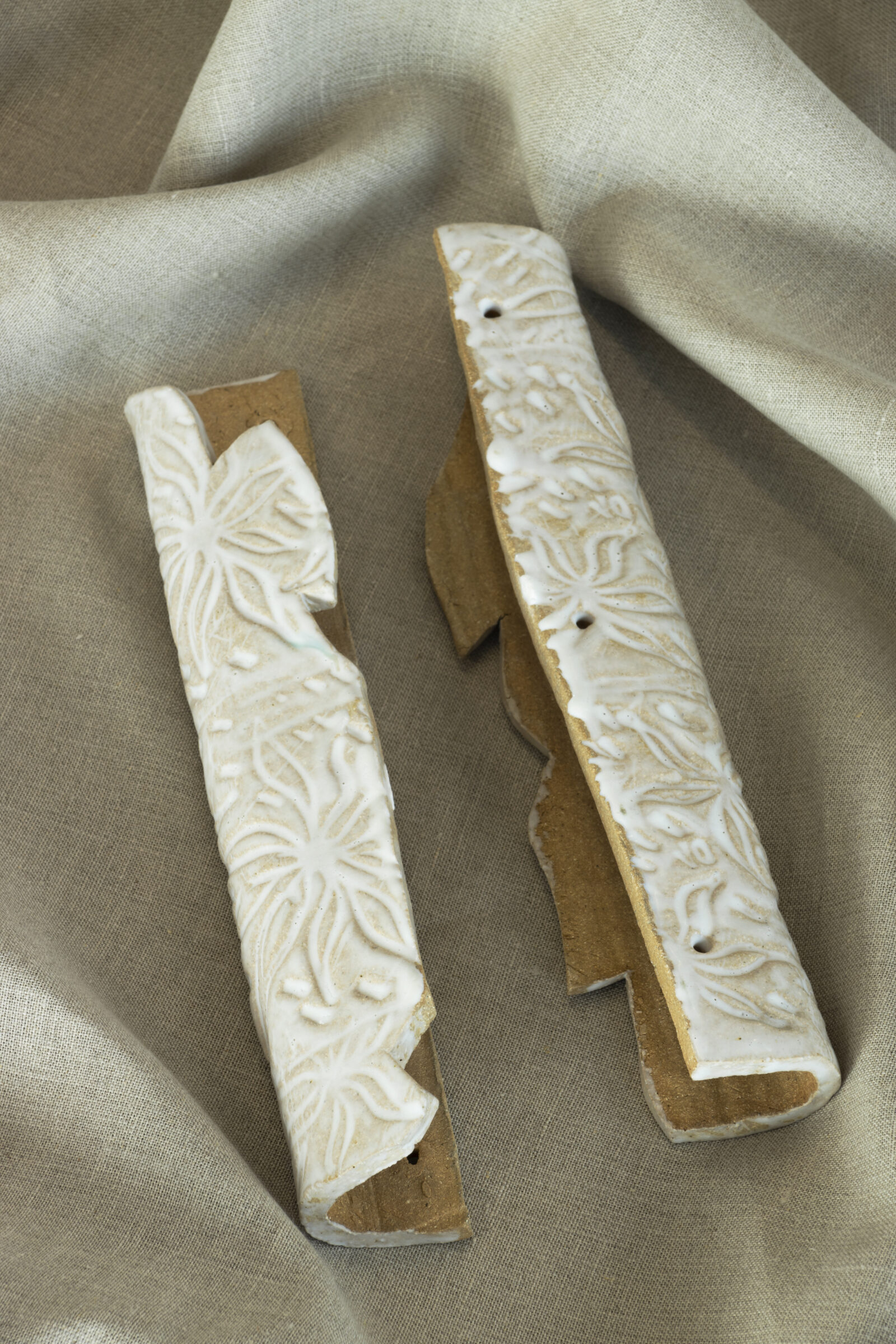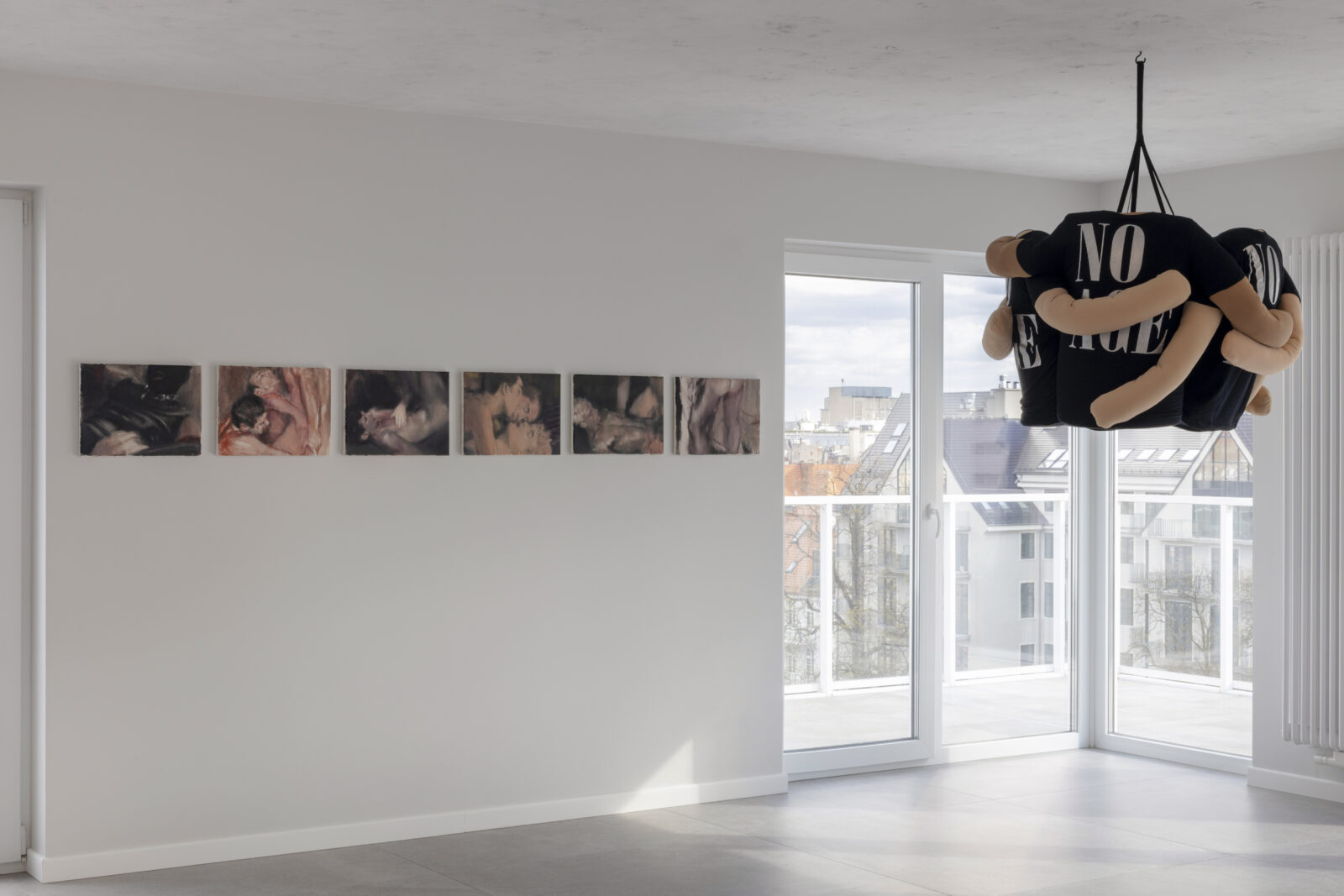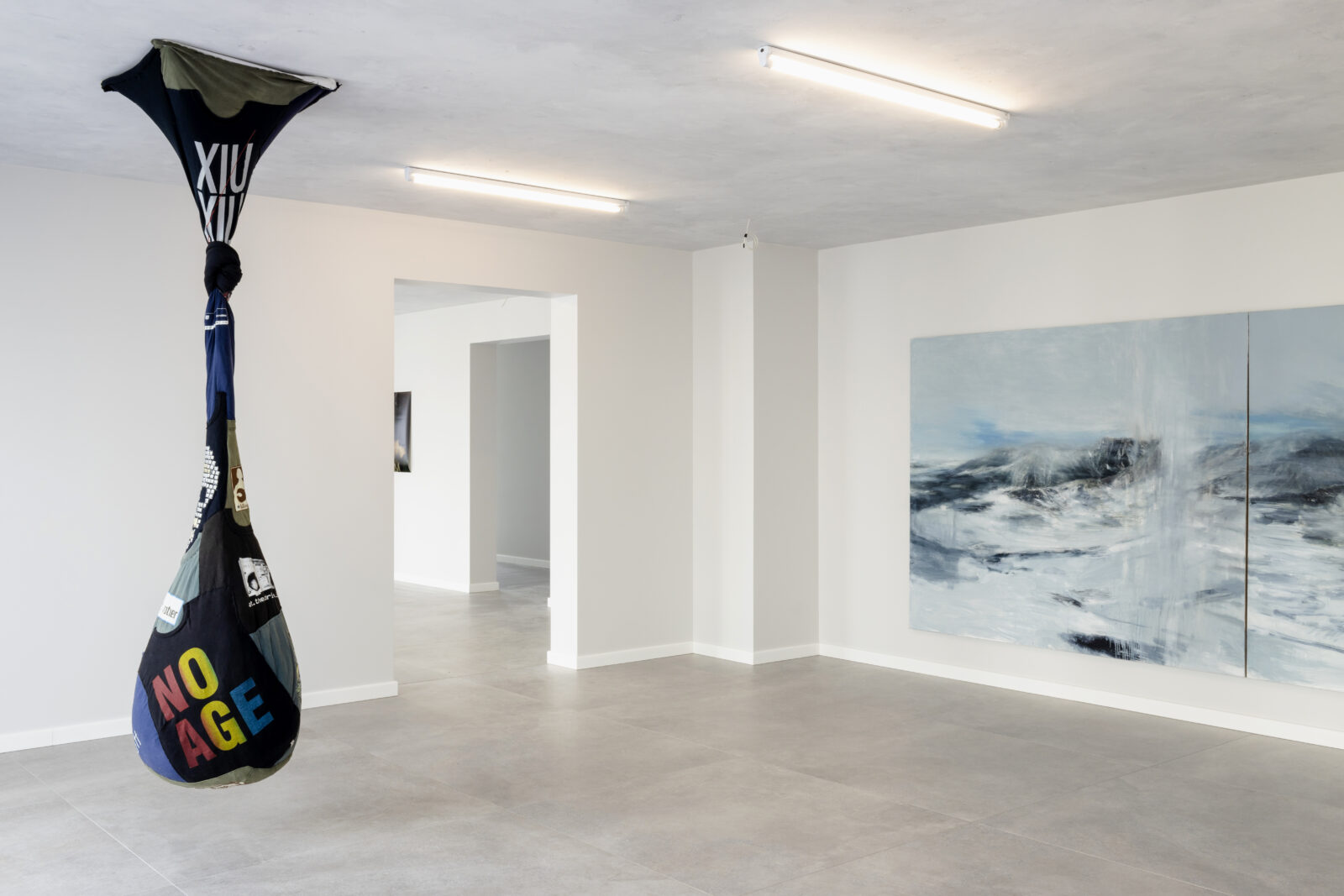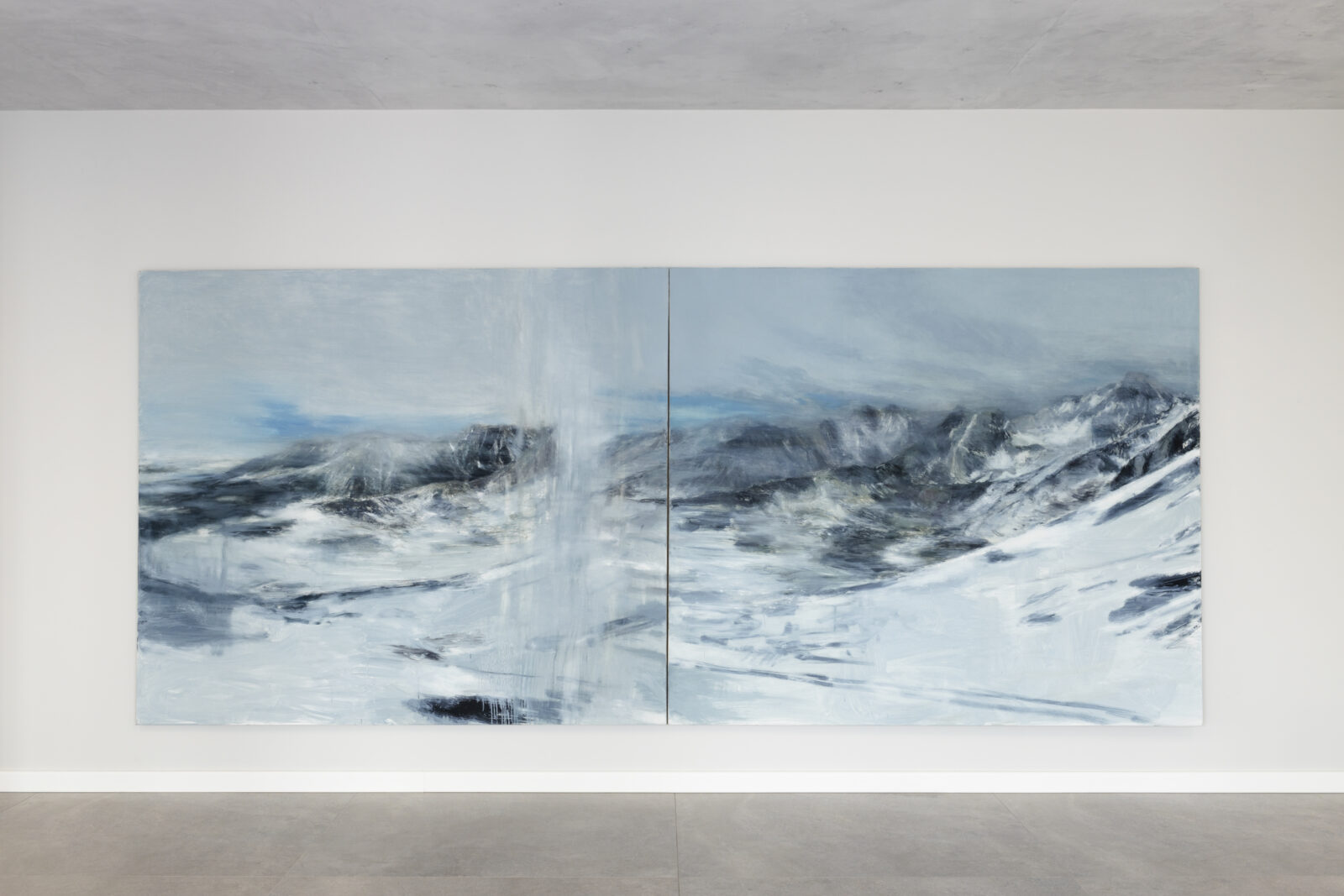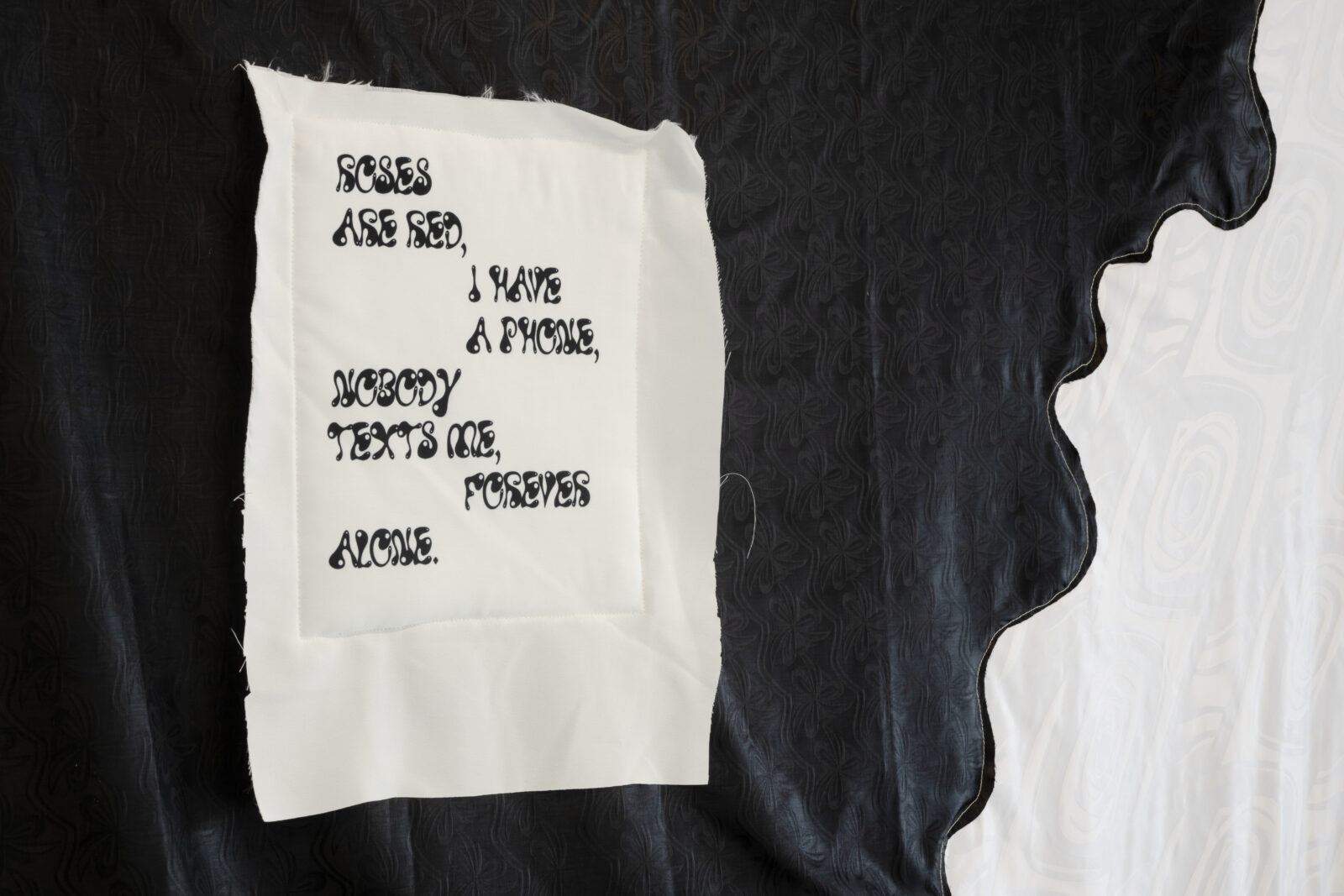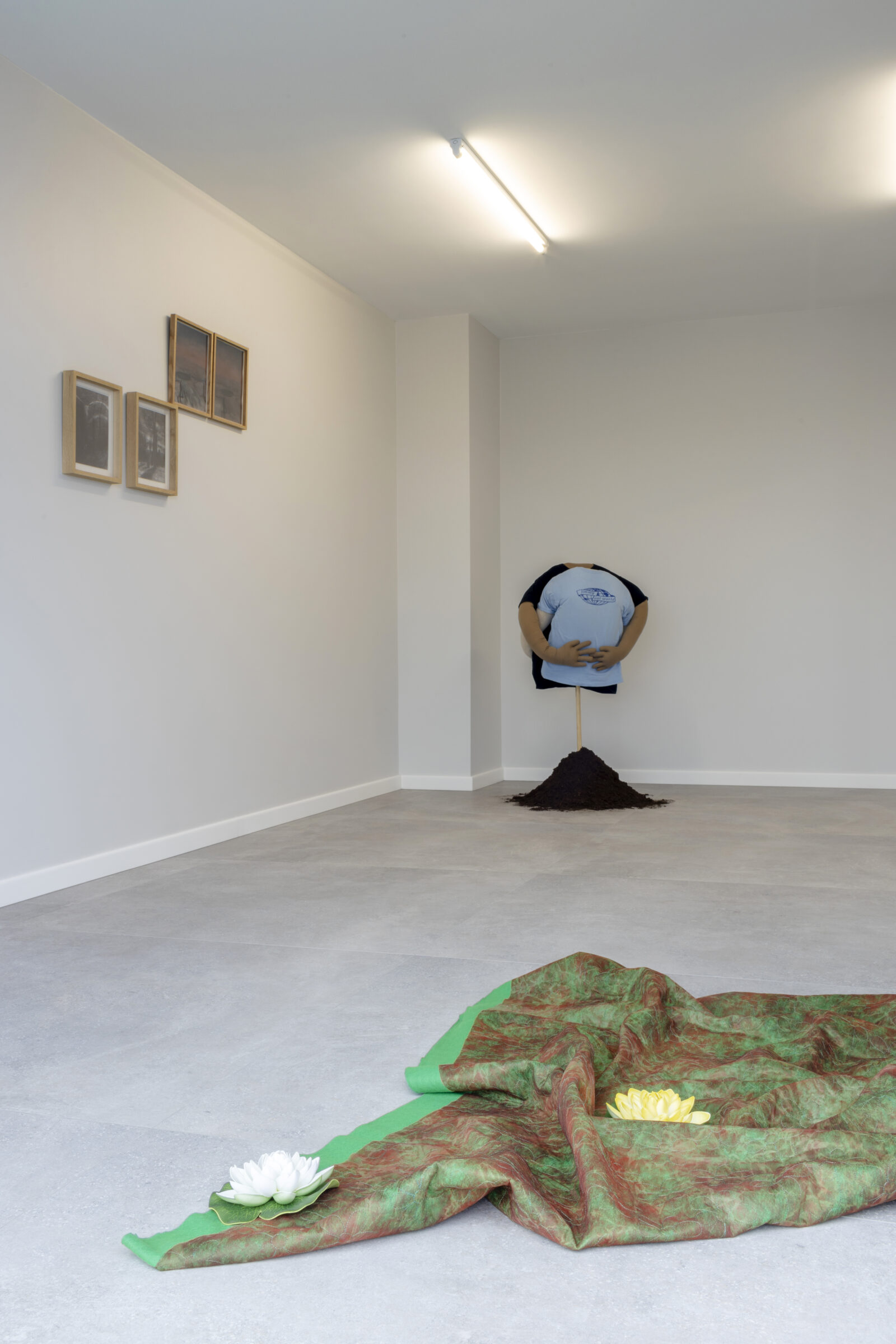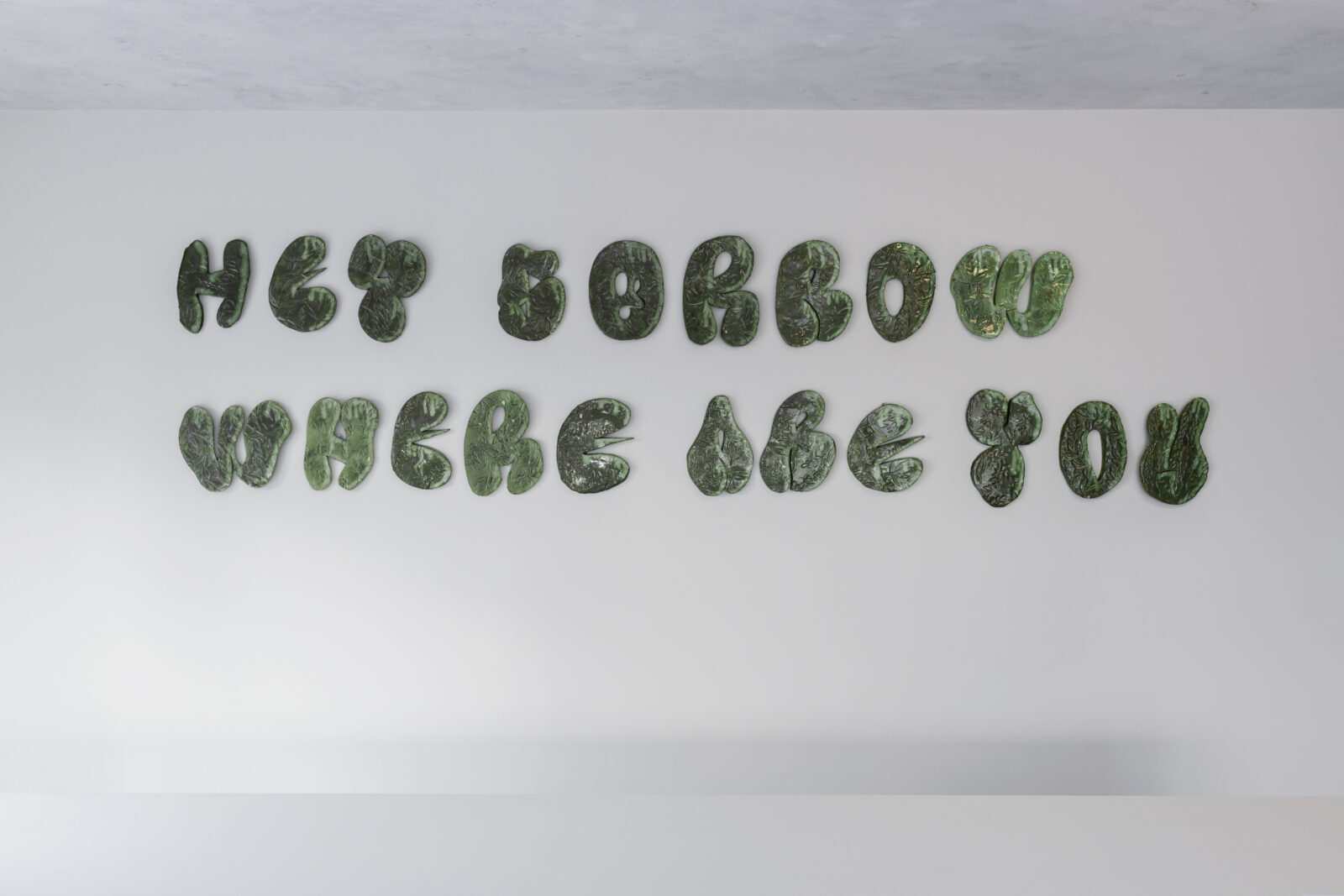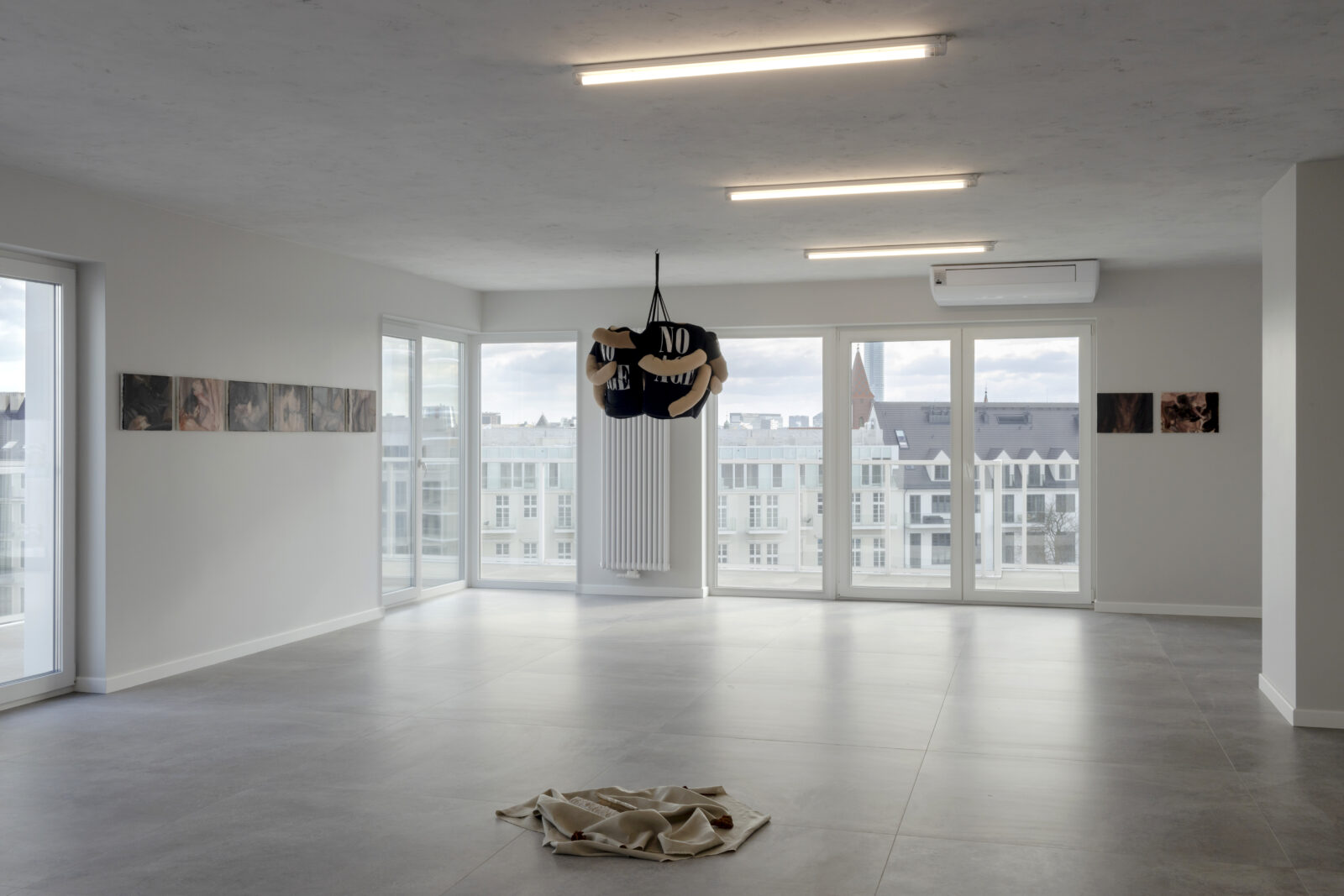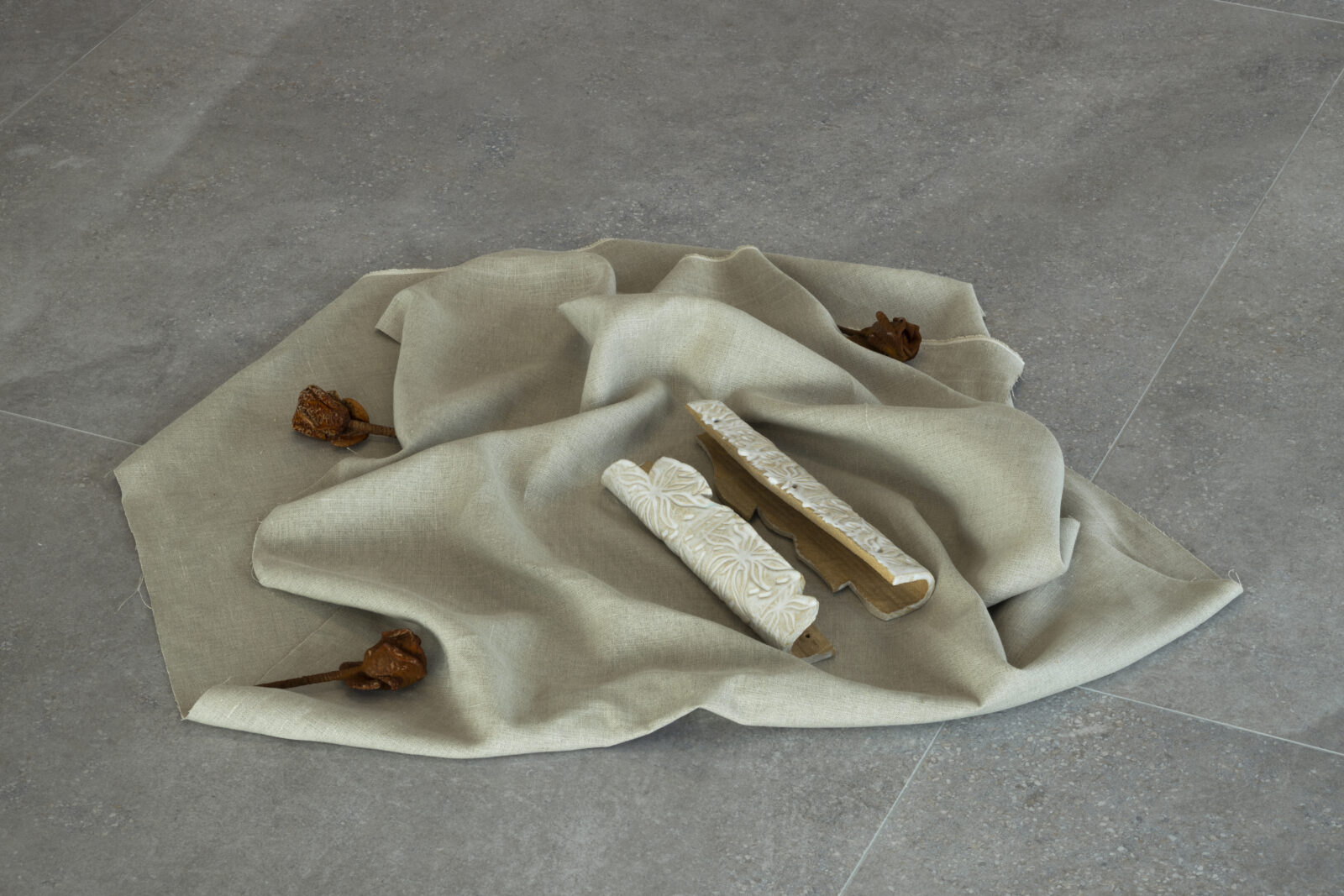Mmmelting
Topnienie przychodzi wraz z końcem zimy – może powstrzymać mróz zabijający młode rośliny, przynieść zbiorowe wsparcie w obawie o przyszłość. Topniejąc zanurzamy się we wspólnym smutku.
Łukasza Stokłosę i Radka Brousila, choć używają odmiennego języka wizualnego, łączy eksploracja wrażliwości oraz podejmowanie kluczowych problemów społecznych, kulturowych i środowiskowych. Artyści przyjmują krytyczną postawę wobec patologii takich jak stygmatyzacja osób LGBTQ, rasizm i niezrównoważony przemysł.
Wystawa stanowi melancholijną opowieść o wykluczeniu, zbiorowej traumie, stracie i tym, co pozostało. Mmmelting to przemijanie, intymność, ciało, wrażliwość, żałoba, ale też zapowiedź ulgi od nieznośnego stanu i hołd młodości.
Opowieść ta krąży wokół różnych linii czasowych, zacierając granice między tym co żywe, nieożywione, czy sztuczne. Wystawa jest bowiem pełna nostalgicznych odniesień do kultury masowej lat 90’, przypadających na czas dorastania tej dwójki artystów. Stokłosa czerpie głównie z kinematografii i seriali telewizyjnych wychwytując z nich wątki queerowe oraz postacie z marginesu. Brousil natomiast skupia się na atmosferze epoki, charakterystycznych kolorach i muzyce – co można zauważyć w jego tekstylnych instalacjach zbudowanych z t-shirtów bliskich mu zespołów (np. NO AGE).
Łukasz Stokłosa, poprzez malarstwo, które – jak sam mówi – wrosło w jego ciało, eksploruje granice prawdziwości. Przez emocjonalny filtr zwraca uwagę na nieuchwytne dysonanse, niepewność wobec tego na co patrzymy. Na wystawie prezentowane są między innymi prace należące do kontynuowanej przez Stokłosę nieustannie od lat serii obrazów czerpiących z homoerotycznych filmów pornograficznych lat 80-tych. Biorąc pod uwagę kontekst panującego w tym czasie kryzysu zachorowań na AIDS, stanowią one upamiętnienie nieżyjących już postaci. Kiedy jeszcze ta diagnoza wiązała się z wyrokiem śmierci – wirus zabijał przedwcześnie młodych, tak jak wczesny mróz zabija młode kwiaty, które nie miały szansy zakwitnąć. W obliczu panującej obecnie pandemii inaczej się czyta wydarzenia w Stanach sprzed przełomu w badaniach nad wirusem HIV. Dziś New York Times prowadzi kronikę osób zmarłych na covid-19, podczas gdy w czasach AIDS opinia publiczna pozostawała obojętna na ilość ofiar aż do lat 90. Przekładając to na sytuację w Polsce, ścieżka stygmatyzacji społeczności queerowych podąża śladami USA, kiedy wybuchła epidemia AIDS. W obu przypadkach mamy do czynienia z epidemią wykluczenia.
Podczas gdy Stokłosa pisze historię na nowo, wydobywając postacie zwykle będące w cieniu, Brousil prezentuje aktywistyczną wypowiedź na temat niepewnej przyszłości, używając przy tym poetyckiej symboliki i skojarzeń. Na rozwiązanie nieprzepracowanych problemów społecznych i ekologicznych artysta z uważną wrażliwością oferuje pozornie banalne, ale przemyślane i emocjonalne sposoby. Hasła, którymi się posługuje i przemyca do swoich fotografii, rzeźb i obiektów są nasiąknięte goryczą niezrozumienia. Są to głównie cytaty zaczerpnięte z tekstów zespołów indie-emo, które w dłużej mierze determinują tytuły prac artysty lub są bezpośrednio wykorzystane, tak jak w przypadku ceramicznego hey sorrow, where are you?
W swojej nowej pracy Brousil czerpie inspiracje z obserwacji gestów wzajemnej motywacji sportowców, które odbywają się zwykle tuż przed rozgrywką. W tym przypadku wspierające się sylwetki, o różnych kolorach skóry, łączą się w żałobie i wspierają się we wspólnym smutku, tworząc jednocześnie schron dla odbiorczyń i odbiorców. Problemy spowodowane bezmyślnymi ludzkimi decyzjami i ich konsekwencjami, które odczuwamy obecnie, sprzyjają podatności na zranienie, przed którym prace Brousila zdają się wcale nie wzbraniać. W zamian oferują zrozumienie, empatię i bliskość. Stwarzają bezpieczny azyl.
Stworzony między artystami dialog burzy heteronormatywne wzorce, zwracając się ku niepewności, fantazji i empatii. Dwie perspektywy wykluczeń spotykają się na powierzchni intymności, wrażliwości i wzajemnego wsparcia, które tak jak topniejący lód przynosi jakiś promyk nadziei.
kuratorka: Natalia Barczyńska
***
Radek Brousil jest czeskim artystą, który tworzy instalacje, pracując głównie z tkaninami, łącząc je z ceramiką, filmem i fotografią. Brousil definiuje problemy społeczne, kulturowe i środowiskowe przy użyciu nieoczekiwanych interpretacji i terminologii, wybierając raczej spojrzenie na te kwestie na poziomie symbolicznym, osobistym i emocjonalnym. Jego zainteresowania skupiają się na postkolonialnych tendencjach we współczesnym dyskursie artystycznym, czego przykładem może być badanie kwestii pochodzenia i dystrybucji kwiatów czy tkanin. Poprzez pracę z tkaninami Brousil podkreśla ich czeskie pochodzenie i afrykańskie przeznaczenie, co pozwala mu zwrócić uwagę na problemy gospodarki rynkowej i jej struktur władzy. Radek Brousil ukończył Studio Fotografii na Akademii Sztuki, Architektury i Designu w Pradze. W 2015 roku otrzymał nagrodę Oscara Čepana dla młodych artystów wizualnych. Jego prace znajdują się w lokalnych i międzynarodowych kolekcjach prywatnych i instytucjonalnych.
Łukasz Stokłosa uprawia malarstwo przedstawiające, często inspirowane kulturą masową, filmami i serialami. Dobrze czuje się w estetyce kiczu. Z podróży i zwiedzania zabytkowych budynków i obiektów czerpie motywy, które później poddaje transformacjom. Często stosuje nieco archaiczną, ale interesującą go strategię homoerotycznego kamuflażu, sięga też do estetyki campu. Zestawiając w swojej praktyce elementy odległe i obce, tworzy swoisty gabinet osobliwości. Ten sposób konstruowania narracji jest szczególnie widoczny w jego rzeźbach-obiektach. Jego zainteresowania koncentrują się wokół współczesnych interpretacji historii i wydarzeń z przeszłości. To, co często charakteryzuje jego malarstwo, to homoerotyczne obrazy inspirowane gejowską pornografią. Obrazy Stokłosy są zmysłowe i inteligentne, pociągające i odpychające zarazem; jest w nich więcej niż na pierwszy rzut oka, jak w przypadku filmu noir.

